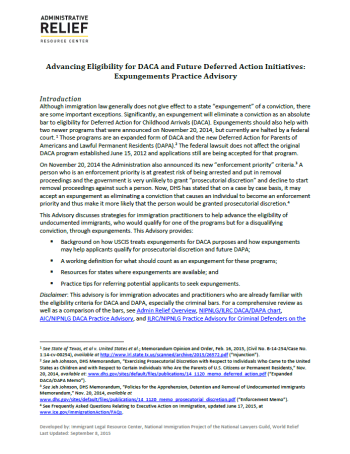
Certain criminal convictions are bars to eligibility for DACA. However, if these convictions can be “expunged,” they will cease to be an absolute bar. Here, an “expungement” refers to any legal process where a criminal court can withdraw, erase, seal, or otherwise eliminate a conviction under a state statute, based on the fact that the person completed probation or other requirements, or for humanitarian reasons. Note that while DACA government materials call this an “expungement,” different state laws may use different terms for this kind of rehabilitative relief. An expungement is not given effect for most immigration purposes – but it does work for DACA. For example, a misdemeanor conviction for driving under the influence is a bar to applying for DACA as a “significant misdemeanor.” If the person has the conviction “expunged,” however, they are not barred from applying, and if they have enough positive equities they may well be granted DACA.
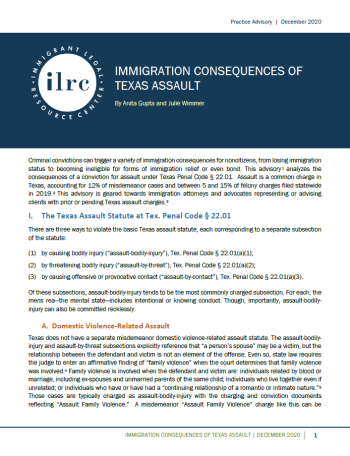
This practice advisory explains the various immigration consequences of a conviction for Assault under Texas Penal Code § 22.01 and provides tips for mitigating such consequences in criminal proceedings. This August 2022 update includes analysis of the Texas Assault statute in light of the Supreme Court’s decision in Borden v. United States. The Texas Assault statute is complex and includes several subsections, so we have included a chart in the appendix describing the potential immigration consequences for each subsection of the Texas Assault statute.
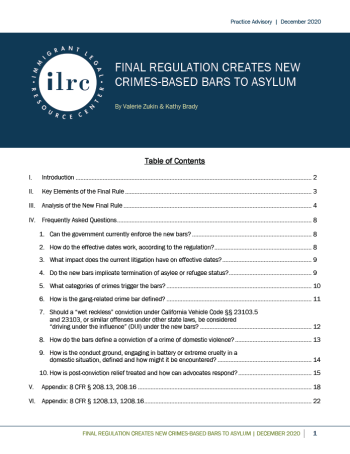
In October 2020, DHS and DOJ published a final regulation that sets out wide-ranging and draconian bars to applying for, and bases to terminate a grant of, asylum. For example, the bars include conviction of any felony, any controlled substance offense, a single DUI with injury, a DUI with a DUI prior (regardless of injury), and domestic violence bars based on the underlying conduct.

The COVID-19 pandemic has created a myriad of challenges for immigration legal service providers. While some research and best practices for providing remote legal services have been developed, serving immigrant survivors of domestic violence requires a unique set of considerations. This advisory describes the findings of a small study exploring how service delivery models have been adapted for this vulnerable population during the pandemic. The advisory outlines the concerns, strategies, and lessons learned from the field in order to continue to serve immigrant survivors throughout the pandemic and beyond.
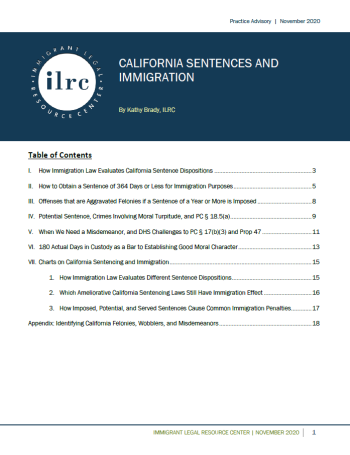
In some cases, the amount of an imposed, potential, or served criminal sentence can determine the outcome of the immigration case. The law governing how state sentencing dispositions affect immigration penalties is fast-changing. The good news is that an informed defender often can structure a sentence that gives the prosecution what they require, while avoiding immigration penalties. An informed immigration advocate wants to be able to explain this to an immigration judge or adjudicator to win the case.
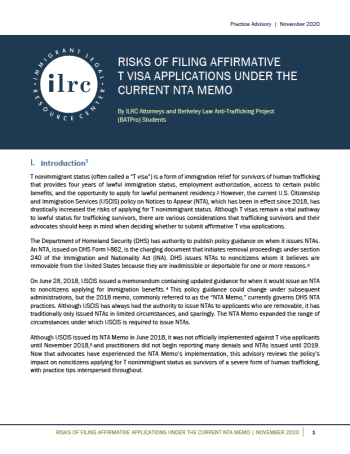
T nonimmigrant status (often called a “T visa”) is a form of immigration relief for survivors of human trafficking that provides four years of lawful immigration status, employment authorization, access to certain public benefits, and the opportunity to apply for lawful permanent residency. However, the current U.S. Citizenship and Immigration Services (USCIS) policy on Notices to Appear (NTA), which has been in effect since 2018, has drastically increased the risks of applying for T nonimmigrant status. Although T visas remain a vital pathway to lawful status for trafficking survivors, there are various considerations that trafficking survivors and their advocates should keep in mind when deciding whether to submit affirmative T visa applications. Although USCIS issued its NTA Memo in June 2018, it was not officially implemented against T visa applicants until November 2018, and practitioners did not begin reporting many denials and NTAs issued until 2019. Now that advocates have experienced the NTA Memo’s implementation, this advisory reviews the policy’s impact on noncitizens applying for T nonimmigrant status as survivors of a severe form of human trafficking, with practice tips interspersed throughout.
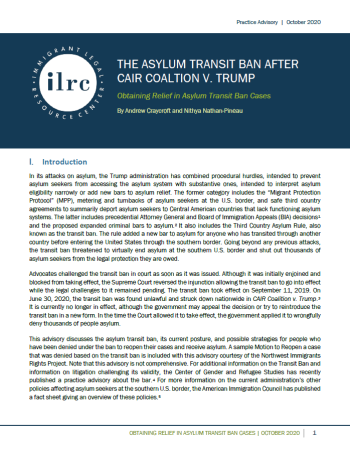
On June 30, 2020, the Third Country Asylum Rule, or asylum transit ban, was found unlawful and struck down nationwide in CAIR Coalition v. Trump. This advisory discusses the asylum transit ban, the CAIR Coalition decision, and possible strategies for people who have been denied under the ban to reopen their cases and receive asylum.
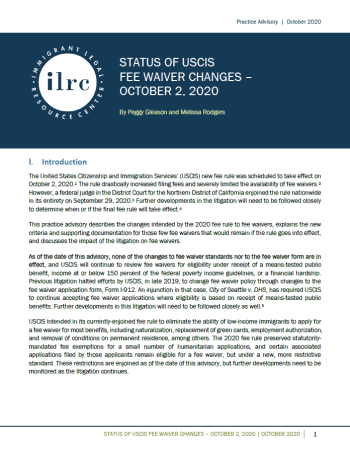
USCIS attempted to drastically limit fee waiver availability and fee waiver standards through the 2020 fee rule. The agency also tried to limit fee waivers by changing the I-912 fee waiver form. For now, these attempted changes have been stopped by injunctions. Applicants can continue to apply for fee waivers based on the 2011 fee waiver guidance.
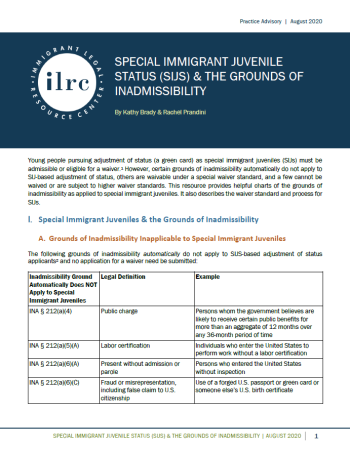
This resource provides helpful charts of the grounds of inadmissibility as applied to special immigrant juveniles (SIJs). It also describes the waiver standard and process for SIJs.
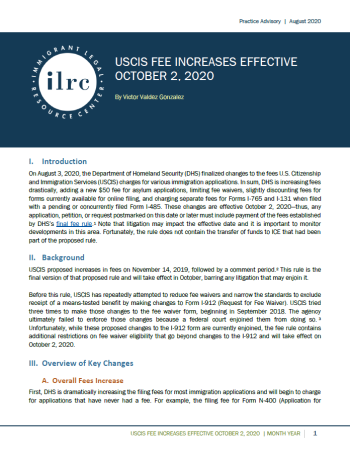
Alert: On September 29, 2020 the Fee Rule was enjoined nation-wide in its entirety by a District court in the Northern District of California, ILRC et al. v. Chad F. Wolf, et al. (ND California) (Case 4:20-cv-05883-JSW) (Sept. 29, 2020).